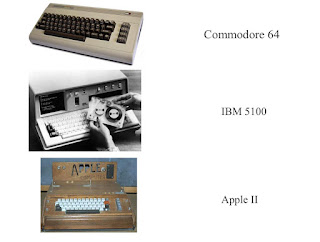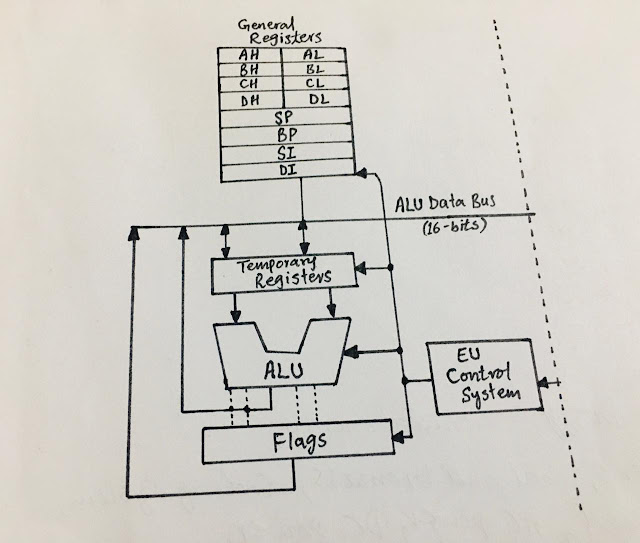History of Microcomputers | Intel, PC, and Apple.
History of microcomputers
·
Microchip
All microcomputers use a processor called a microchip. This is typically a small square sliver of silicon microcomputers that use a processor called a microchip. This is usually a small square of silicon (glass) with a chemical formula. These channels can be transistors or just "cables" that connect transistors. If we can pack enough of these transistors in silicon “die” then those transistors can be a unit of processing, memory, and calculator. Everything is called an “integrated region”.
Intel
Intel 4004 was a 4-bit CPU released by Intel Corporation in 1971. It was the first complete CPU on a single chip, and also became the first commercial microprocessor available. Such merging work is being carried out with the latest technology of silicon gate that allows for a higher number of transistors and faster speeds than before.
· In mid-1974 Intel, a manufacturer of the transistor and memory chip came up with the first successful design of the "computer on a chip" called the 8080. It runs in dual (2Mhz) MegaHertz and performs computer functions with 8 (8) bit1 Central Processing Unit (CPU). The 8080 had the construction of forty (40) pins allowing for a sixteen (16) minibus.
·
The 8086 shown below in the picture is a 16-bit
microprocessor chip designed by Intel in early 1976 and released in mid-1978.
The 8086 gave rise to the x86 architecture of Intel’s future processor.
·
MOS Technology
In 1975 MOS Technology developed the same chip as the 8080.
The designer was Motorola’s Chuck Peddle and his idea was to design a chip
compatible with the Motorola 6800, but much cheaper. At first, there was little
public interest because it was cheaper ($ 25 compared to Intel's $ 179) that no
one took seriously. Fortunately, both Intel and Motorola took it seriously,
lowering their prices by less than $ 80, and thus making the 6502 attractive.
The First Microcomputer: Altair 8800
The Altair 8800, manufactured by Micro Instrumentation and
Telemetry Systems (MITS), and developed by Ed Roberts, was originally marketed
as a kit. It did not have an application but has seen instructions installed
with a series of changes. Altair did not have a keyboard and could not connect
to a television screen. Altair’s first goal was to offer a wider range of
hobbyists than the average MITS customer. So far, MITS has been planning
elements aimed at rocketry in the backyard.
With the obvious "hit" of Altair, Intel, MOS
Technology and Motorola had the opportunity to sell large amounts of chips.
Intel and MOS Technology have reduced their prices to less than $ 100 per unit.
Motorola has increased its prices slightly due to the potential of its chip.
Black-and-white television was used as a display screen
(since no color-coded machine) and keyboards were widely available. Commodore
actually included all circuit cycles in its "fat" keyboard case.
No one installed the
mouse, graphics, or software required to use any. Most of the equipment
includes Microsoft's primary language; however, Microsoft did not even have an
application at this time.
· Early Microcomputers
(Microcomputer of the seventies) the manufacturers continued
to make strides in speeds, power, and functionality. Rather than ask the
customer to supply the television set, manufacturers started building them into
the unit. The professional design began to appear with sleek-looking cases that
often integrated the display and keyboard into the same enclosure for the
computer.
·
Business Computer Phase II
Apple has introduced the complete Apple II with a monitor, floppy disc drive, and keyboard. This was a machine that looked more polished than the comic in the photo above.
At this point in time, there was no graphics (Window Operating System) or mouse.
·
The PC age
On August 12, 1981, the shoe finally came off. IBM announced
the launch of the Model 5150 thus entering the microcomputer market and moving
the industry to its foundations.
Currently, there are no business-oriented computers. The mouse is still a downtime in the laboratory and the color has not yet reached
the computer screen.
History of the Apple
Computer
The development of
microprocessor
|
Generation |
category |
Typical products and production time |
|
The first generation |
4-bit and 8-bit machines |
Intel 4004 (1971), Intel 8008
91972) |
|
The second generation |
8-bit machines |
Intel 8080 (1974), Motorola
MC6800 (1974), Zilog Z80 (1975), Intel 8085
(1977) |
|
The third generation |
16-bit machines |
Intel 8086 (1978), Zilog Z8000(1079),
Motorola 68000(1979), Intel
80286, Motorola 68010(1989) |
|
The fourth generation |
32-bit machines |
Zilog Z80000(1983), Motorola 68020(1984), Intel 80386(1985), Intel
80486, Motorola 68040(1989) |
|
The fifth-generation |
Super 32-bit machines |
Pentium(1993), Pentium Pro(1995), Pentium II(1997), Pentium
III(1999), Pentium 4(2000), Core(2006) |
|
The sixth-generation |
64-bit and more machines |
Artificial intelligence core i7(2008), sandy bridge(2011), ivy
bridge(2012) |












Comments
Post a Comment
if you have any doubt, please let me know.